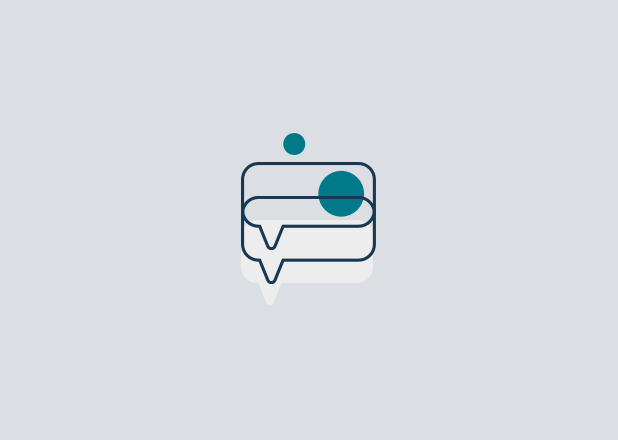Jungian therapy
Jungian therapy - or Jungian analysis as it is also known - is a psychoanalytic approach that was developed by leading psychotherapist, Carl Gustav Jung. Along with Freud, Jung is considered one of the pioneers of modern depth psychology, particularly of the unconscious mind.
Through the process of self-awareness, transformation and actualisation, Jungian therapy can help individuals see what is out of balance in their psyche. This is to empower them to consciously make changes that will help them to become more balanced and whole.
Jungian archetypes
A key aspect of Jungian psychotherapy is understanding the relationship between the individual and their psyche, by bringing elements of it into consciousness. Jung asserted that the unconscious is expressed via archetypes - innate projections that are cross-cultural and universally recognised and understood. These organise how human beings experience certain things and are evidenced through symbols found in our dreams, religion and art.
Throughout life, it is expected that these inner-world archetypal expectations collide with other world experiences. This can give rise to internal conflict through the inevitable defences of the ego. Jung recognised that the ego must be released from these disturbances or 'complexes' in order for individuals to lead fulfilling and meaningful lives, in which their energy can be put to more productive use in the service of life.
Whilst Freud asserted that dreams and the unconscious are personal things contained within an individual, Jung believed that the personal unconscious is only the top layer of a much deeper, larger collective unconscious. This is the uncontrollable, inherited part of the human psyche which is made up of patterns (archetypes) common to all humanity.
In Jungian therapy, these patterns can explain why we have habits we cannot break, such as addictions, depression and anxiety. Therefore, the approach aims to analyse these archetypes in order to better understand the human self.
Although Jung believed that there was no limit to the number of archetypes that may exist, he did identify four major ones within all humans.
1. The self
The self represents the unification of the unconscious and conscious parts of the mind. It is thought to be the central governing archetype of the human psyche.
The creation of self is to live to the fullness of our being - something that is typically achieved in our lifetime. Jung defined this instinctual process as 'individuation'. The result is an individual in the real sense of the word - a whole and unique self that is resilient to complexes. It is the aim of Jungian therapy to aid individuation.
2. The persona
The persona refers to how we present ourselves to the outside world. It is not our real self and instead tends to be the good impression we want to put across to others. Alternatively, it may be a false impression - a version of ourselves that we use to manipulate people's opinions and behaviours.
The human psyche consists of something Carl Jung referred to as the “persona.” The persona is a role that an individual chooses to play in life or it is the impression of them they want to express to the outside world.
- Psychotherapist Daljinder Bal (MBACP, UKCP) in ‘Persona vs shadow: ‘The hidden side to us’.
Often, we mistake our persona for our true self but the self-actualisation and awareness promoted in Jungian therapy helps us to separate the two. The persona then becomes a distant part of the collective unconscious.
3. The Anima/Animus
These are the second most prevalent archetypes. Whilst the anima represents the 'feminine' qualities of the male psyche, the animus represents the 'masculine' qualities in women. Jungian analysis assumes that all men have feminine components in their psyche and vice versa. It is also believed that these archetypes are representations of our true selves - the route to our souls - and the source of all our creativity.
In the western world, however, it has always been considered the done thing for these archetypes to be suppressed. For example, men have been socially conditioned to curb any signs of femininity, whilst women have been led to believe masculine qualities are unattractive. This can lead to inner conflicts, which can limit our potential. Jungian therapy aims to help individuals accept their anima/animus - uniting their unconscious and conscious - to help them feel whole.
4. The shadow
This archetype reflects deeper, darker elements of our psyche - our repressed ideas, instincts, weaknesses, shortcomings and desires. Jung believed these latent dispositions are found in all human beings and will appear in our dreams or visions, taking a variety of forms (i.e. appearing as a specific animal or event). These experiences will often reveal deeper thoughts and fears.
The crucial thing is that, rather than accepting this element of their own psyche, some people will project their shadow onto others. In Jungian analysis, the individual is encouraged to integrate the shadow and the real self. This self-acceptance is considered key to wholeness.
The idea of shadow work is to shine a light on these hidden parts; doing so will help set you on the path to understanding yourself better and growing as a person. A psychotherapist or counsellor can assist you in exploring your shadow by looking at uncomfortable feelings, exploring the unconscious, engaging in dream analysis or journalling.
Counsellor Nada Alansari (MBACP) in ‘Can looking into the shadow help you find the light?’
The Jungian therapy method
Jungian therapy is a talking therapy, but there are various methods of exploration used throughout the process. These will be most successfully applied if the client-counsellor relationship is one founded on authenticity, trust and professional collaboration of equals.
The quality of this relationship ensures that clients feel comfortable opening up about their problems - providing the necessary support and security to facilitate the awareness, self-actualisation and transformation that will help them overcome difficulties that are limiting their psychological wholeness.
Through the process of self-awareness, transformation and actualisation, Jungian therapy can help individuals see what is out of balance in their psyche. This is to empower them to consciously make changes that will help them to become more balanced and whole.
Below are some of the common techniques a Jungian therapist will use. These will be tailored to the individual and their needs.
Dream analysis
The Jungian analysis of dreams is based on Jung's assertion that dreams are "an anticipation in the unconscious." They offer the ego information, advice, and constructive criticism of ourselves in an alternate perspective - challenging our ego to consider these.
Ultimately, our dreams compensate for any maladaptive attitudes and behaviours that are limiting our potential and the Jungian therapist aims to amplify this process to help facilitate a transformation of the psyche. This may involve symbol analysis.
Creative activities
Other methods of Jungian therapy may include creative activities such as painting, drama, dance, sand playing, listening to music, and dream journaling. These methods of self-expression can help clients engage with their active imagination and relieve inner creative qualities that may be inhibited by moral or ethical values.
The use of imagination in psychotherapy is extremely beneficial to most clients, for healing purposes as well as for personal and transpersonal development. It offers a great variety of tools and, in different ways, can apply to all approaches and conditions.
- Counsellor Vicky Sinclair (MSc, MBACP)
Jungian therapy can help clients to embody certain qualities or archetypes, in order to change learnt patterns of behaviour. For instance, the archetype of the knight or the warrior might be helpful in transforming blocked energies associated with depression and bringing about clearer thinking and revitalised energy.
Counsellor Noel Bell explores this theory in his article ‘Manifest the qualities needed to beat depression.’
Jung's word associations test
Also known as the 'free associations test' this method involves recording a client's average response time to certain stimulus words. The client is asked to say the first thing that comes to their mind after the therapist says something. The response time is used to indicate activated unconscious complexes related to certain problem words.
If you believe this approach might be beneficial, scheduling a session with a counsellor who specialises in Jungian therapy should be your next step. This will allow you to raise any additional questions you might have and develop a clearer understanding of how this type of therapy could help you.

Find a therapist dealing with Jungian therapy
All therapists are verified professionals



